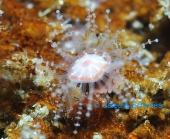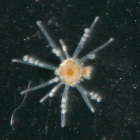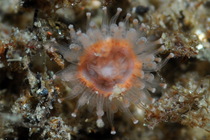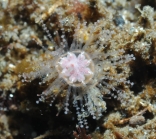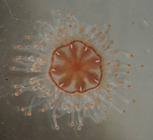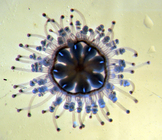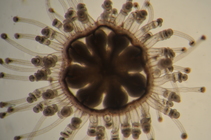RAS taxon details
Staurocladia Hartlaub, 1917
117091 (urn:lsid:marinespecies.org:taxname:117091)
accepted
Genus
- Species Staurocladia charcoti (Bedot, 1908)
- Species Staurocladia vallentini (Browne, 1902)
- Species Staurocladia hodgsoni (Browne, 1910) accepted as Staurocladia charcoti (Bedot, 1908) (unaccepted > junior subjective synonym)
- Species Staurocladia kerguelensis (Gilchrist, 1918) accepted as Staurocladia charcoti (Bedot, 1908) (unaccepted > junior subjective synonym)
marine, fresh, terrestrial
recent only
Hartlaub, C., 1917. XII. Craspedote Medusen. I. Teil. 4. Lief.: Familie V. Williadae. Nord. Plankton 19 : 365-479. [details]
Schuchert, P.; Choong, H.; Galea, H.; Hoeksema, B.; Lindsay, D.; Manko, M.; Pica, D. (2025). World Hydrozoa Database. Staurocladia Hartlaub, 1917. Accessed through: RAS (Eds.) (2025) Register of Antarctic Species at: https://ras.biodiversity.aq/aphia.php/www.pfeil-verlag.de/04biol/rest/aphia.php?p=taxdetails&id=117091 on 2025-09-12
RAS (Eds.) (2025). Register of Antarctic Species. Staurocladia Hartlaub, 1917. Accessed at: https://ras.biodiversity.aq/aphia.php?p=taxdetails&id=117091 on 2025-09-12
Date
action
by
original description
Hartlaub, C., 1917. XII. Craspedote Medusen. I. Teil. 4. Lief.: Familie V. Williadae. Nord. Plankton 19 : 365-479. [details]
context source (Hexacorallia) Fautin, Daphne G. (2013). Hexacorallians of the World. (look up in IMIS) [details]
basis of record van der Land, J.; Vervoort, W.; Cairns, S.D.; Schuchert, P. (2001). Hydrozoa, <B><I>in</I></B>: Costello, M.J. <i>et al.</i> (Ed.) (2001). <i>European register of marine species: a check-list of the marine species in Europe and a bibliography of guides to their identification. Collection Patrimoines Naturels,</i> 50: pp. 112-120 (look up in IMIS) [details]
redescription Schuchert, P. (2006). The European athecate hydroids and their medusae (Hydrozoa, Cnidaria): Capitata Part 1. <em>Revue suisse de Zoologie.</em> 113: 325-410.
page(s): 386 [details]
context source (Hexacorallia) Fautin, Daphne G. (2013). Hexacorallians of the World. (look up in IMIS) [details]
basis of record van der Land, J.; Vervoort, W.; Cairns, S.D.; Schuchert, P. (2001). Hydrozoa, <B><I>in</I></B>: Costello, M.J. <i>et al.</i> (Ed.) (2001). <i>European register of marine species: a check-list of the marine species in Europe and a bibliography of guides to their identification. Collection Patrimoines Naturels,</i> 50: pp. 112-120 (look up in IMIS) [details]
redescription Schuchert, P. (2006). The European athecate hydroids and their medusae (Hydrozoa, Cnidaria): Capitata Part 1. <em>Revue suisse de Zoologie.</em> 113: 325-410.
page(s): 386 [details]
